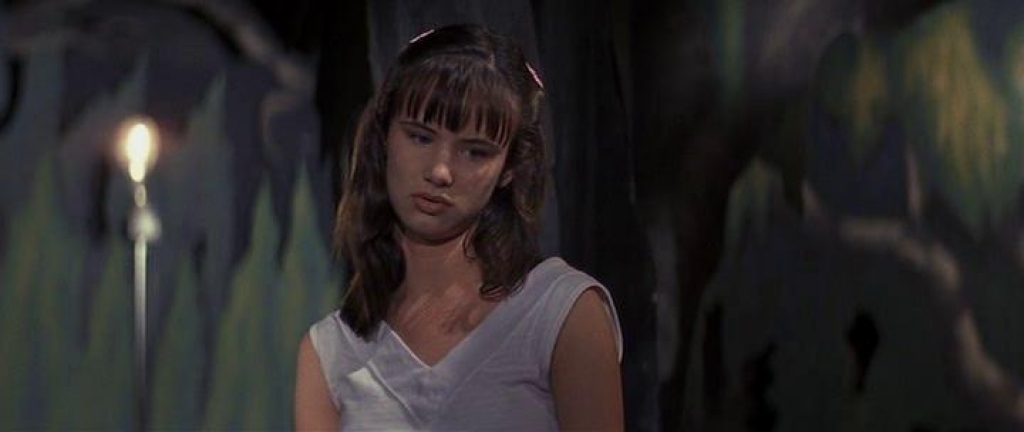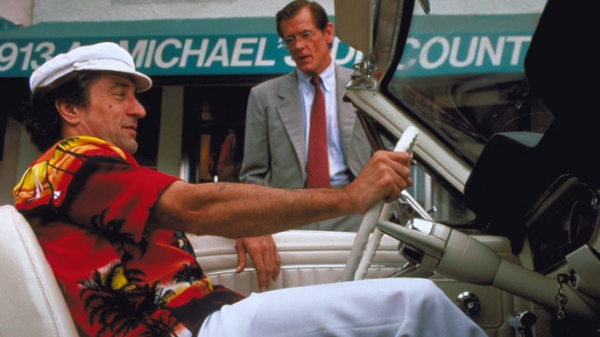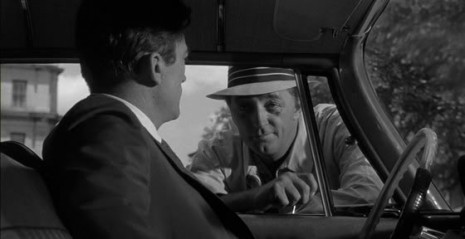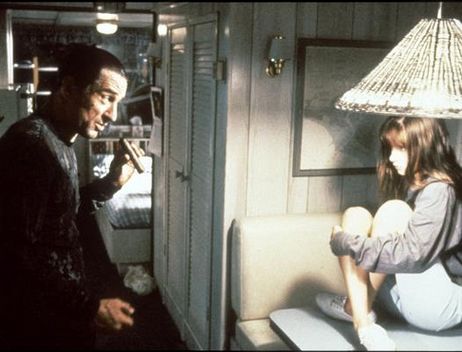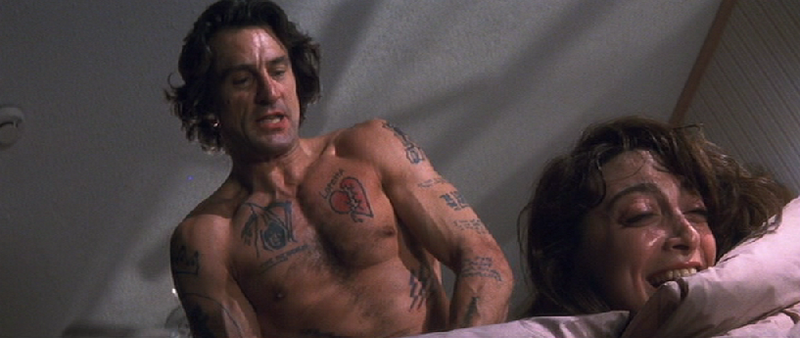From the Chicago Reader (November 22, 1991). — J.R.
CAPE FEAR
* (Has redeeming facet)
Directed by Martin Scorsese
Written by Wesley Strick
With Robert De Niro, Nick Nolte, Jessica Lange, Juliette Lewis, Joe Don Baker, Illeana Douglas, Fred Dalton Thompson, and Robert Mitchum.
I have nothing against pornography when it’s good, clean sex, but I don’t enjoy watching a cat play with a mouse, and I got no pleasure from seeing Mr. Mitchum — huge, brawny and sweatily bare-chested — toy first with the frantically terrified ten-year-old daughter and then move on to conquer her shrinking, pleading mother. — Dwight Macdonald
Cape Fear is heavy on Spanish moss and sick behavior, a classic demonstration of the differences between rich and poor; to say nothing of the typical good ol’ Southern boy’s view of women. Unfortunately, there aren’t many of ’em have very much good to say. You won’t forget this movie, especially if you’re a Yankee Jew. — Barry Gifford
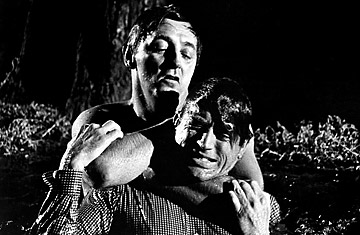

These remarks come from reviews of the original Cape Fear. Macdonald’s was written the same year the movie came out, 1962, and Gifford’s a couple of decades later; together, they help to show how we’ve increasingly come to view nastiness as a form of high art. Macdonald’s reason for reviewing the movie was strictly polemical: New York state had just banned Shirley Clarke’s film version of The Connection because of its frequent use of the word “shit,” mainly as a synonym for heroin, and Macdonald wanted to know why Cape Fear could be seen “by anyone tall enough to shove his or her dollar through the ticket window” while The Connection couldn’t be seen even by adults in New York. Gifford, on the other hand, clearly regarded the film as some sort of noir classic, and went on to use the fictitious “Cape Fear” as a location in his novel Wild at Heart; David Lynch retained the name when he made his film version.
A few weeks ago I watched the original Cape Fear on video. (Or I tried to watch it; Universal Pictures had encoded the video with something called Copyguard, meant to prevent people from dubbing it, but it had the unfortunate effect of changing the lighting in every shot from dark to light and sometimes back again.) The movie is pretty awful in most respects — its script formulaic (James R. Webb, adapting John D. MacDonald’s novel The Executioners), its direction plodding (the lumbering J. Lee Thompson), its lead performances wooden (Gregory Peck, Polly Bergen, Lori Martin). But it’s exceptional in two respects: Robert Mitchum turns in a truly creepy performance as a psycho just out of prison (even Dwight Macdonald conceded how good he was), second only to his even creepier part as the homicidal preacher in Charles Laughton’s The Night of the Hunter. And Bernard Herrmann created a taut and evocative score. Otherwise, pace Barry Gifford, this movie is entirely forgettable. As we all know, nastiness is a deeply revered quality in the American cinema of the 90s — consider all the raves conferred on Silence of the Lambs — but not even Mitchum at his near-best and Herrmann at his second-best could make me like this 60s version.
So why did Martin Scorsese, the most respected American film director alive, want to remake this dubious piece of schlock? For months we’ve been reading about how he wanted to do a genre piece, how he accepted it as a challenge, how he needed another hit (an excuse already used for The Color of Money), how Robert De Niro suggested the project. Or could it be that Scorsese was aiming to please some of his most enthusiastic admirers, the ones who reserve their highest praise for his nastiest movies — Mean Streets, Taxi Driver, Raging Bull? Such critics praise him not only for his nastiness but for his flashy technique, his arsenal of film-buff references, his religious obsessions, and his romantically doomed antisocial heroes — and I think Scorsese has given this critical cheering section exactly what it wants: an anthology of Scorsesean themes and stylistic quirks, perfect fodder for a term paper. All that’s missing, really, is a setting and reason for all these supposed virtues.
It’s not that Scorsese isn’t talented and important, but he needs a decent script for his talent to become important — as I think it does above all in The King of Comedy, where most of the “virtues” cited above are conspicuously absent or held in check, and to a lesser extent in the best parts of Taxi Driver and Raging Bull (when his talents aren’t too burdened with crybaby narcissistic conceits). But thanks to rampant auteurism he’s been praised almost exclusively for his stylistic tics, while the stories (often by others anyway) that make them meaningful are usually ignored.
As a piece of cinema, Scorsese’s Cape Fear is superior to the original — at least if one discounts the importance of Mitchum’s original performance and excuses Scorsese’s self-conscious stylistic showboating. Shooting for the first time in a wide-screen ‘Scope format, Scorsese devises many fancy ways of filling his rectangular frames; he has hired Saul Bass to furnish the movie with some tasteful, arty credits, goes in and out of negative (both black-and-white and color), and even employs red and yellow fade-outs a couple of times. He’s worked out some jolting ways of cutting elliptically between scenes, which speeds his narrative along with admirable dispatch, and he’s gotten Elmer Bernstein to reorchestrate the original Herrmann score, which is nearly as effective as it was the first time around.
Scorsese and screenwriter Wesley Strick have altered the original story in a lot of potentially intriguing ways. But since none of the adult leads is either very believable or very interesting — and since most of the main story lines are every bit as stupid as they were in the original — none of this razzle-dazzle counts for much (and little of it, incidentally, razzles or dazzles much either). When the movie comes out on video, if standard practice is followed a third of Scorsese’s frames will be lost; and if Copyguard is used, the lighting may be sabotaged as well. We’ll still be stuck with what this movie has to say — which, all things considered, is precious little.
In both versions of Cape Fear, a sadistic ex-con (Mitchum/De Niro) turns up in a small North Carolina town where an attorney (Peck/Nick Nolte) partly responsible for the con’s long prison term lives with his wife (Bergen/Jessica Lange) and daughter (Martin/Juliette Lewis). In the original the daughter is 10; in the new version she’s 15 — definitely an improvement, because she’s the only character in the story with any believability or depth. (She also appears to be the sole character with whom Scorsese identifies — an only child alienated from her parents who’s both tantalized and frightened by the ex-con’s charisma.)
In both versions the villain was convicted many years ago of rape and assault; in the original the lawyer was an eyewitness, while in the Scorsese version he was the criminal’s attorney and deliberately suppressed a piece of evidence — the victim’s promiscuity — that probably would have gotten the criminal a shorter sentence. In both versions the villain is interested in taking revenge on the lawyer in as many ways as he can devise — poisoning the family dog and raping and brutalizing a woman friend and colleague for starters, then moving on to the wife and daughter — and the lawyer is increasingly prevented from defending himself and his household by various legalities, a situation exacerbated by the legal expertise the villain has picked up in prison.
The biggest change in the villain is that Scorsese and Strick have turned him into a Pentecostal Christian who has tattooed much of his body with religious symbols and quotes from Scripture. I can think of three possible inspirations for this, the last two of which seem in conflict with each other: (1) The Night of the Hunter, where Mitchum had the words “love” and “hate” tattooed on his knuckles, (2) Scorsese’s own well-advertised obsession with religion, and (3) a personal joke on Scorsese’s part, ridiculing the fundamentalists who picketed his film The Last Temptation of Christ.
If these were Scorsese’s inspirations, the first two seem extravagantly misapplied and the third at the very least distracts from the material rather than enhances it. Mitchum’s performance in The Night of the Hunter is a daring, angular piece of expressionism — not only quite unlike his more naturalistic acting in Cape Fear but fundamentally incompatible with it. Scorsese has apparently directed De Niro to blend Mitchum’s naturalism in Cape Fear with his expressionism in The Night of the Hunter (at one climactic point, De Niro even speaks in tongues). But what he and De Niro come up with is the least convincing De Niro performance I’ve seen — a patchwork of isolated good and bad ideas, all of them extremely studied, that never add up to one solid human being. Admittedly Scorsese often uses the character more as an irrational metaphysical force — usually some version of the Devil — than as a comprehensible human being, but his ex-con generally ends up more silly than frightening.
Scorsese’s religious concerns seem equally misapplied because they fail to fit either the ex-con (as defined in the original film) or the story; they seem virtually painted on, rather than natural outgrowths of the material. When these concerns become most pronounced, in the film’s final sequence, they register as a pretentious form of nudging — strident signals of higher meanings that have been neither earned nor developed.
What’s so chilling about Mitchum’s preacher in The Night of the Hunter (a character also fully present in Davis Grubb’s Faulkner-inspired novel) is that his fundamentalism, his misogyny, his puritanism, and his murderous psychosis are all interlocking facets of the same personality; as the movie unfolds it’s virtually impossible to isolate any one of these strands from any other. In Cape Fear the misogyny and fundamentalism of De Niro’s character simply exist side by side, barely on speaking terms with one another; they seem isolated stock attributes rather than integral parts of a continuous, logical character. The ex-con seems to believe the Bible literally, yet he’s also a big Henry Miller fan who reads Nietzsche in his spare time, and nothing in the film either acknowledges this apparent contradiction or tries to make anything out of it. And when it comes to Nolte’s character — he reads the Bible, too — the religious references at the end seem even more forced; Scorsese delivers them like recipes to a robot chef, and Nolte just dishes them out instead of making them express facets of his own personality.
One can see that Scorsese has worked hard to make his characters more interesting than they were in the original, and if working were having, he might have produced an interesting picture. (He’s probably been hampered by his lack of familiarity with the south. With the exception of Mitchum — who turns up briefly here as a police lieutenant, exuding reality and conviction from every pore — the local color is all hand-me-down stuff, dimly remembered from other bad movies.) Because of Scorsese’s attention to character, the internal tensions in the family promise a great deal, but nothing gets delivered; the telegraphic leaps of the narrative never give these people a chance to grow or reveal themselves beyond the plot points they’re designed to articulate. One can admire in theory Scorsese’s decision to make all the adult characters unsympathetic, but in practice this means that one can’t care much what happens to any of them. Nor can I go along with the defense of a friend and fellow critic who argues that this is a movie about archetypes rather than a movie about characters; maybe it is, but so are most of the worst movies ever made.
The movie shows some indications that Scorsese became so alienated from the story that for his own amusement he settled on playing formalist games and inserting obscure film references. Perhaps the most gifted member of his generation, he shares with most of the others (like De Palma and Lucas) the pattern of starting out making movies about the subjects he knows best — Mean Streets is an obvious example — and then turning for inspiration to other movies, the subject that perhaps he knows second best.
As a menacing thriller, the movie succeeds at best only fitfully, and then mainly through some applied Hitchcockery. The most startling single moment is an indirect steal from Psycho, and the matching camera movements that build up to it are equally Hitchcockian. The climax on a riverboat — where the family have idiotically fled, as they did in the original, for no apparent reason other than to provide us with a set piece — has its moments, but they aren’t cumulative. The fact that all the characters are still lamentably underdeveloped robs the sequence of any emotional continuity: every fresh character trait revealed here merely interrupts the action rather than develops it.
